Irrespective of what phrase you use to describe the poison ivy – “the leaves of three” – the impact after you come into contact with this plant is the same – an itchy, blistery rash that is caused by the presence of an oily resin called urushiol. This oily component can be found in the leaves and stems of this plant. So, before we explain how to get rid of poison ivy without getting in danger, we will get more familiar with this plant, in order to know how to deal with it.
So what’s the deal with poison ivy? If you always have kids playing in a yard filled with this plant, then there is always a likelihood they will come into contact with it. Sooner or later, one of them will drop their toy or ball on the plant, or even worse, fall directly onto it.

Learning about the effective ways to get rid of the poison ivy is one of the most significant survival skills you can ever possess as this could save you or your loved ones if you became victims of the plant’s allergy-causing poison. This guide will feature some of the basic aspects of the plant that you need to know including how to identify poison ivy, how to treat allergies caused by these plants, and how to get rid of them.
WHAT IS POISON IVY
Before we can proceed further, it’s imperative to have an idea of what the poison ivy is. First, this is a plant that causes allergies in seven out of ten individuals by releasing a chemical, urushiol, which causes rashes when a person comes into contact with the stems or leaves.
To get a rash, you will only require one-billionth gram of urushiol. This chemical remains potent on surfaces, including the tools you use in the garden for a long time. That is why this chemical has a reputation of being the most allergenic component. In fact, urushiol immediately causes rashes and itchiness from the time your skin comes into contact with it.
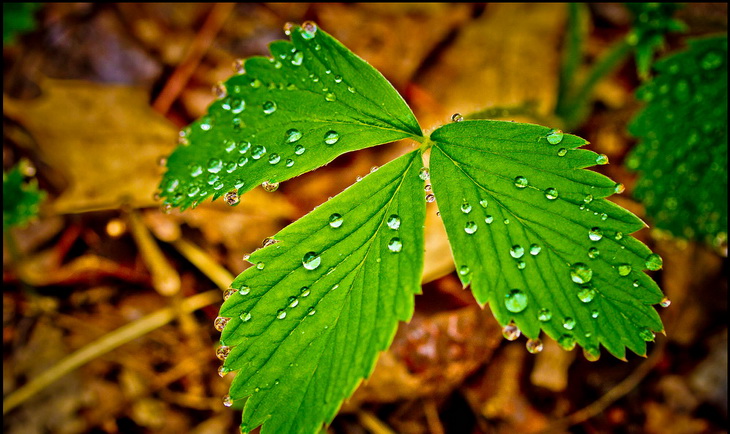
However, you don’t need to worry when you get rashes from this plant as the problem can easily be treated at home. But if the symptoms persist, and in case of difficulty in breathing or swallowing, it’s recommended to seek medical attention. In the worst case scenario, one may develop rashes on their face that could lead to swelling of their eyelids. In such a situation, this should be considered a medical emergency, and the person must be rushed to the hospital.
PICKING POISON IVY FROM THE REST OF THE PLANTS
When in the outdoors, it’s important to be able to determine how the poison ivy looks like so you may be able to stay away and warn everyone else within your campsite. In general, this plant has three small leaflets and grows as a shrub. The poison ivy grows like a woody plant in Western and Northern Canada, the United States, and the Great Lake regions.
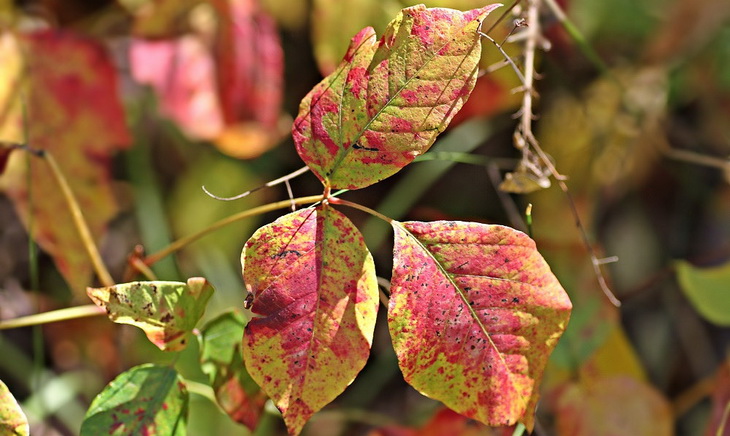
On the other hand, it grows like a vine in many sections of the Midwest, Eastern, and Southern United States, with bear green berries that turn off-white during fall. Here is how to identify poison ivy.
- The leaves: These plants have three leaves with pointy tips and smooth sides. Besides the longer middle leaf are two smaller leaves with lengths ranging from a quarter an inch to two inches.
- Growth patterns: Poison ivy can cover the ground (four to ten inches), can appear as upright shrubs and bushes (up to four feet), and as vines which climb other trees.
- Arrangement of stem: Every group of the three leaflets grows on its thornless stem. The stems are all connected to one vine that is covered in hair.
Note: This short description is to assist you to identify the plant in case you encounter poison ivy. That way, you can advise others when camping outdoors.
HOME REMEDY FOR POISON IVY
Along with its pestilent friends, poison sumac, and poison oak, poison ivy can cause terrible rashes in people who are allergic to these plants. Oil in these plants, urushiol, causes allergic reactions, weeping, burning, and cracking of the skin. If you happen to get a rash from the poison ivy, this guide will tell you how to get rid of the reaction without having to wait for the skin to heal naturally. Also, make sure you have a ready DIY first aid kit to keep you and your family protected.
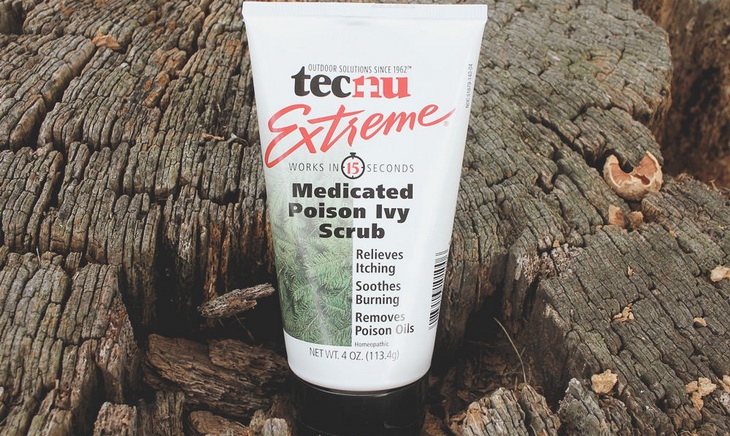
Natural healing could take up to three weeks, which is a long time to suffer from allergic reactions. These steps will help you get rid of rashes from poison ivy within the shortest time possible.
Steps to consider
- If you do not have a rash or are worried that you might get one, it’s advisable to prevent it
- If you already have a rash that causes pain and suffering, make an effort to treat it
- The idea is to completely wipe out the rash by killing the urushiol – the oil causing the rash. This isn’t difficult to do. Mineral spirits help get rid of the urushiol
- The only poison ivy medication you can obtain over the counter and contain urushiol-killing mineral is Tecnu. This product works effectively to kill the chemical causing the infection, preventing the spread of urushiol to other parts of the skin. You can purchase this product from a local pharmacy or an outdoor retail outlet. The instructions on how to use it are included in the package
- If you’re not in a position to purchase Tecnu, then there is also another option you can utilize – paint thinner. The active ingredients contained in most of these products are mineral spirits. Always ensure your thinner has mineral spirits in it. Put some of the thinner on a clean piece of cloth and rub it into the affected parts of the skin. Be careful when applying around the mouth, the nose, and the eyes. Additionally, you should be careful not to ingest the paint thinner. If you are capable, go with Tecnu as this product contains a petroleum-based solvent that is absorbable through the skin.
- Let the paint thinner or Tecnu, soak around and into the affected areas for a few minutes
- Once the absorption is complete, make sure you thoroughly clean the area with water and soap to wash the chemicals off. The chemicals in paint thinner and Tecnu aren’t particularly good for the skin; nevertheless, in the short term, they are clearly better for it as opposed to urushiol.
- The infection should be killed, and the itchiness should quickly subside after applying Tecnu or paint thinner. Nonetheless, it will take a few days for the remnant cracking, swelling and flaking to disappear completely.
- Another technique to eliminate the effects of poison ivy on your skin is to run the affected area under hot (but bearable) water for about ten minutes. This will stop the itching, and your skin will go back to normal within two or three days.
Important tips to remember
- Do not wait until the symptoms begin to manifest before you can take any action. If you know that you have come into contact with the poison ivy, it’s important to take the necessary measures to prevent its effects
- The sooner you seek remedy, the sooner the infection will disappear
- The best way to avoid coming into contact with poison ivy is to kill the plant
- Poison ivy doesn’t spread when scratched. When the plant rubs on your skin, it will rub the center of the future rash the hardest as it gets most of the urushiol to the middle. The surrounding parts may get the oil, but these will not be as much as the center of the contact. When you start scratching, the rest of the rash just moves inwards and not outwards.
- Do not wait to remedy the situation. Wash the affected part immediately you are in contact with poison ivy.
- You can apply toothpaste on the infected parts. Let the paste sit for about five to ten minutes. Do this two times a day for three days, and the rash will disappear
Read our article on poison ivy rashes to give you more knowledge on what to expect next.
POISON IVY HOME REMEDIES
When you are out camping and you happen to come into contact with poison ivy, there are steps you can take to eliminate urushiol. You can make Jewelweed, which is a plant stem that contains juice that stops itching. This fluid can be applied to the infected area of the skin to relieve yourself from the itching. All you need to do is crush the stem and rub it directly on the rash to allow the juice to penetrate.
Alternatively, you can collect some Jewelweed while in the wilderness, crush the stem, adds some water and blend them together. Once you are done, you can store the mixture in a dispenser bottle that will allow you to apply the fluid on the affected area.
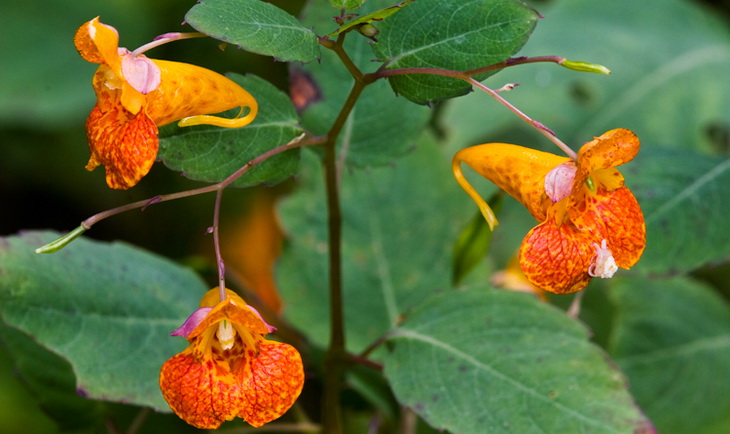
If you are camping on the beach and you happen to get some rashes from the poison ivy, take a bath using the sea water. This process will help wash the sores away as salty water will dry out the blisters. However, if you are not close to the sea at the time of contact, you can make a salt solution by using Epsom salt. These products are usually useful in treating dermatitis and rashes from poison ivy. Read and understand the instructions, sprinkle some salt into warm water and apply the mixture on the rash.
Other remedies you could use when camping outdoors include:
- Baking soda baths and pastes: A typical baking soda is an excellent natural solution for treating itchiness that is linked to a poison ivy rash. To mitigate and relieve itching, place a half a cup of baking soda in a basin or bathtub filled with water (lukewarm). You can also decide to mix three teaspoons of the baking soda with a teaspoon of water. Mix the two components until they form a paste. Rub the paste on the infected part of the skin to relieve the irritation.
- Oatmeal paste: Prepare a small amount of oatmeal and apply it directly to the affected part. Make sure the paste is thick, so it can stick to the skin. Some experts recommend rubbing the oatmeal while it’s warm, since the heat from the paste will eventually cool, leaving your skin feeling dry and relieved. Always ensure you don’t apply the paste when it’s hot as this will burn your skin. For an extra relieving effect, try adding a teaspoon of baking soda.
- Organic apple cider vinegar: Smear a teaspoon of organic cider vinegar directly to the affected part of the skin. The apple cider vinegar contains a toxin-relieving action which helps in sucking the poison out of the skin’s pores. You may also create warm vinegar compress using a cotton towel. You can repeat this process until the symptoms subside.
- Aloe Vera gel: An old curative remedy for your skin, this product can be applied directly to the affected part. You may purchase a high-quality organic Aloe Vera at the most health-food outlets, or better yet, buy the plant and utilize the gel from its inner flesh. The external utilization of the juice from Aloe Vera may also help, but this is not as efficient as the gel.
- Himalayan crystal salt: Do not forget that poison ivy makes the skin red and wet. Salt is a natural remedy as it pulls the excess water and the poison from the skin’s pore. Make a paste by using Himalayan salt and purified water. You may also take a bath in warm salty water. Experts recommend putting a cup of the Himalayan salt into a bathtub and soaking yourself in it for about twenty minutes. This will help to alleviate the problem.
- Organic Goldenseal: Mix a portion of the powdered Goldenseal root with hot water in small portions. Rub the paste on the affected area of the skin to minimize the chances of an infection. To get quick results, drink the Goldenseal tea or try consuming a Goldenseal supplement. This type of remedy helps in minimizing the effects of poison ivy.
Make sure you are adequately protected. Check out our article on the best hiking attires for you to wear while backpacking.
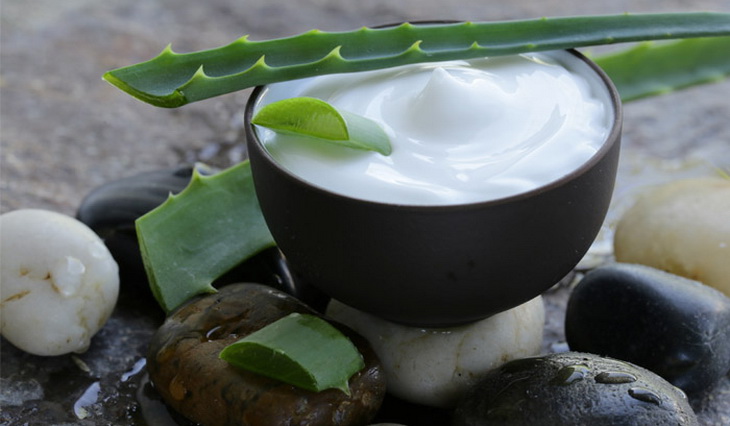
CONTROLLING POISON IVY IN THE GARDEN
Now that you are aware of the step to take to get rid of the rashes as a result of urushiol, it’s also important to have an idea of how to eliminate the poison ivy in your backyard. This plant can be a real nuisance to a homeowner if it’s not eliminated in time. If the poison ivy makes your yard its home, it is essential to have some useful ideas on how to get rid of the plants, which is often easier said than done. Anyway, here are some pointers you need to consider when controlling this poisonous plant in your garden.
The first and most important thing is to decide whether you want to use a chemical or an organic technique to eliminate the plant. Although both methods are effective, a chemical process presents faster results compared to the organic technique. One of the most difficult things to do is to get rid of a plant in its entirety. And if you are utilizing the organic control technique, it means you need to pull the entire plant out using your hand.
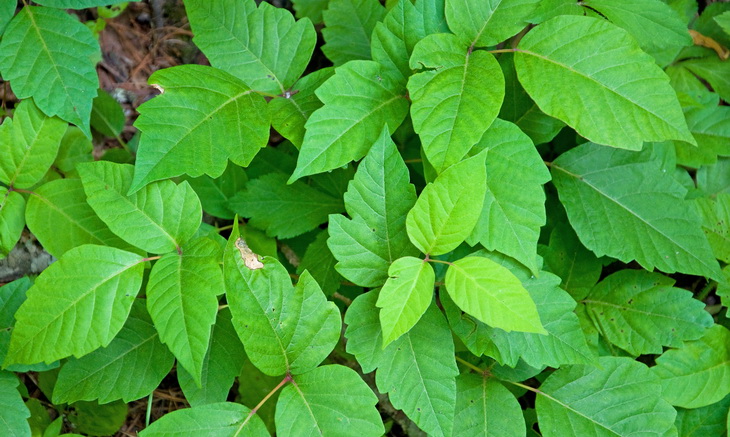
But what is the right time for this procedure? It’s advisable that this process is undertaken after the rains when the roots are easier to pull due to the soft soil. During sunny days, the ground is usually dry, making it difficult to remove the plant due to the compact soil. Unless you have your gloves and long sleeve on, do not attempt this process.
Make sure you don’t come into contact with any other thing that touched the plant and contains the oil as this can transfer easily through the gloves into your skin. And for this very reason, the chemical process is mostly preferred by gardeners. The chemical control method eliminates any chances of coming into contact with the poison ivy.
However, pulling it out of the ground is always the fastest way of getting rid of poison ivy. Interestingly, some individuals are immune to the effects of this plant. If you happen to know someone like that and is willing to help, you are lucky! But if you are doing this yourself, be sure you put on the right protective clothes. You will not only need the gloves to protect your hands, but you will need an attire that covers every piece of your body to prevent exposure to the plant when uprooting it.

This implies duct taping the pants around the edges of the shirts to the glove and your pants around the socks. When you are through with pulling the poison ivy, wash your clothes at least two times before you can wear them again. Better yet, you can throw them out if you have spare clothes with you. Taking these precautions before and after the task can help save you long hours or even days of discomfort.
After you have pulled the plant out, make sure you dig approximately eight inches beneath the plant so you can be sure that all its roots have been removed. Cover the area using paper or cardboard to prevent any regrowth. Deposit the uprooted plant in a leakproof garbage for collection later on.
Another organic control technique is the use of hot water. However, this approach is only useful if there aren’t any other plants you want to keep. Pour the hot water directly over the plant and its roots to kill it. You need to be careful when using this technique as hot water can kill any other plants it comes into contact with.
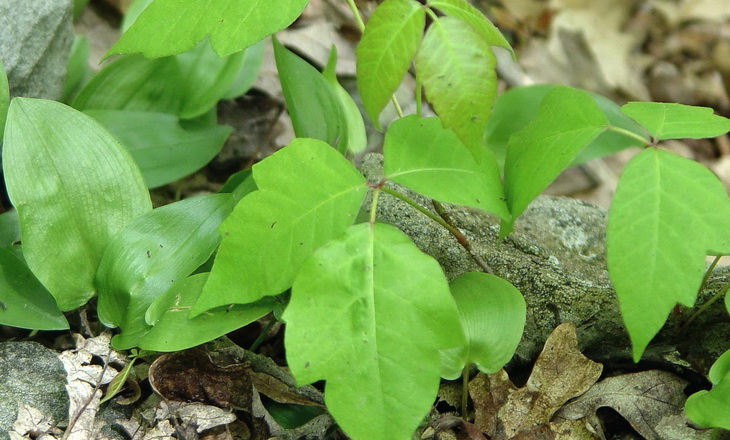
There is another technique you can use if you do not like engaging in manual labor. Combine three pounds of salt in a gallon of water and a quarter cup dish soap. After that, place the mixture into a bottle sprayer. Spraying the mixture will get rid of the plants it gets in contact with, so be keen so you can only spray the mixture on the poison ivy. It’s advisable to undertake this task in a sunny day as the rain can wash off the solution. It may take a while to get rid of the plant, but the technique works!
USING WEED-KILLING SPRAY
If you are getting impatient because the organic criterion of eliminating poison ivies doesn’t work, you may resort to a chemical technique of killing the weed. Sprays which contain triclopyr and glyphosate, are effective in killing the tissues of the poison ivy. After application, the plants die in about a week or two.
The herbicides are efficient when it comes to getting rid of the plant. However, for the best result, spray or apply the chemicals on the leaves and if it happens to grow, spray it again. Doing this several times will reduce the ability of poison ivy to re-grow, and this will kill it completely.
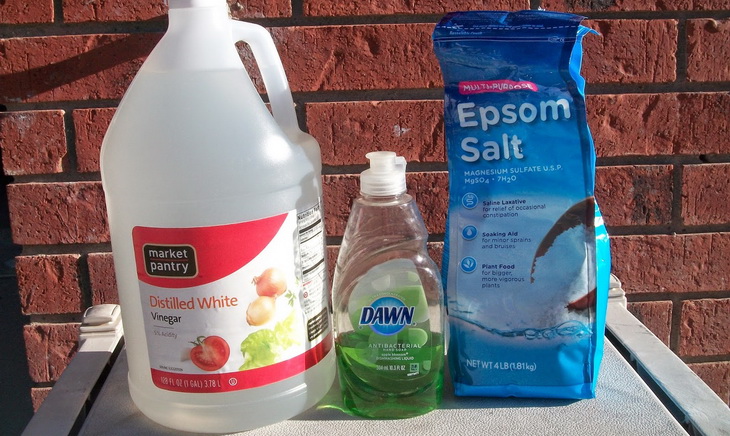
Warning: Whatever chemicals you decide to use, make sure you read and understand the instructions and directions of use. Make sure you keep all chemicals out of children’s reach.
WRAP UP
There is so much you could do when you want to get rid of the poison ivy in your garden or when you come into contact with the plant’s feared urushiol. Many of these techniques are simple home remedies as they utilize ingredients such as lemon and vinegar, baking soda, and other over-the-counter solutions including rubbing alcohol and calamine lotion. These can also include fruits and vegetables such as banana, cucumber, and watermelon. And if you are looking to eliminate these plants from your garden, two options are available to you – the organic and chemical techniques.
It should be remembered that while the poison ivy can result in painful effects on the humans, it’s valuable to us. Birds, deer, and even insects feed on the plant, and some tiny animals utilize it as shelter. If you happen to see it in an area where no one can touch it, it’s best to leave the plant for the wildlife that thrives in it rather than having to remove it.
Hitting the trail soon? Don’t forget to check out our article on hiking essentials to make your trip enjoyable and safe.
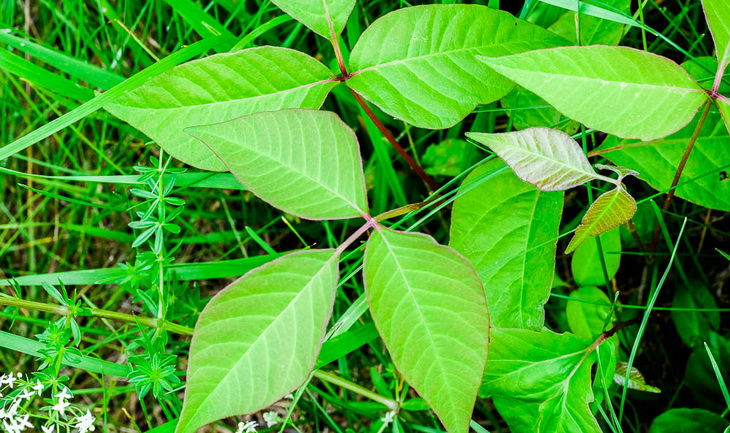
So, did you find this guide helpful? If you have any questions or suggestions regarding poison ivy, do not forget to post them in our comment section. We’ll be more than happy to hear from you.




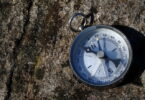



The toxins from the poison ivy plant constitute of oil, and they won’t get off completely with just water. The tips I have provided should help you.
Apart from toothpaste, you can try baking soda, when it dries the baking soda will flake off for speedy recovery.